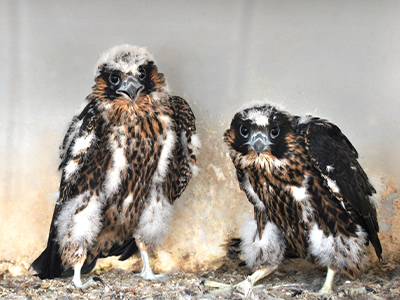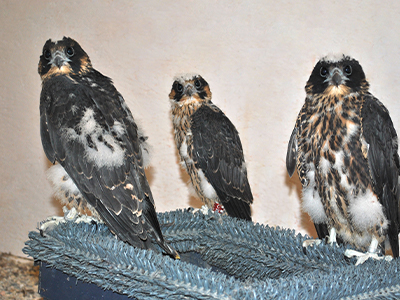‘George’ hatched in May of 2007 along with one female and two male siblings after being incubated by parents Claire and Caleb for 33 days. From the time he hatched until he was removed from the captive breeding nest site with his siblings 35 days later, his world was made up of his family, the interior features of his breeding enclosure and the open sky above.
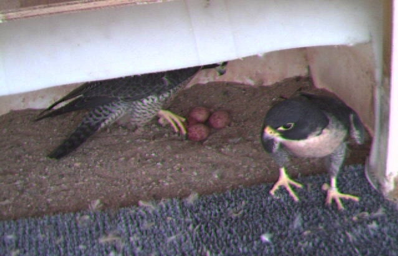
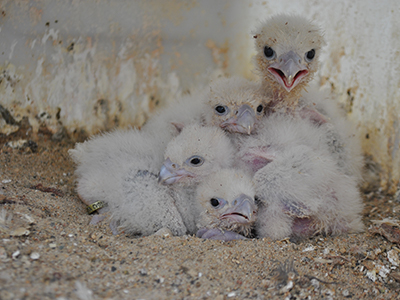
He had spent the first five weeks within the confines of his nest barrel, being fed by his parents, interacting with his siblings and developing at the physical, mental and social levels.
However, his life was not without drama. His mother died when he was just a few weeks old, leaving his father to feed George and his three hungry siblings. Being a male his smaller size was an advantage as the food that was brought to him was enough to help him be satiated and for him to grow. Alas, the same was not true for his sister, ‘Sierra’. Her larger body needed more food for growing and was seriously lacking in weight until one day, she was found lying lethargic on the ground. She was rescued in time and has spent many years successfully raising young of her own at Parkland Mews.
In the meantime, George and his other siblings were placed in the release box atop of the Parkland Mews tower. After about a week he was allowed to fledge and gained confidence to fly and hunt for food, and eventually, like previous generations of Peregrines through time, began his first autumn migration down to the Gulf States in the U.S. and Central America.
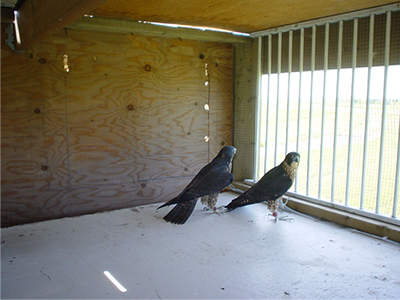
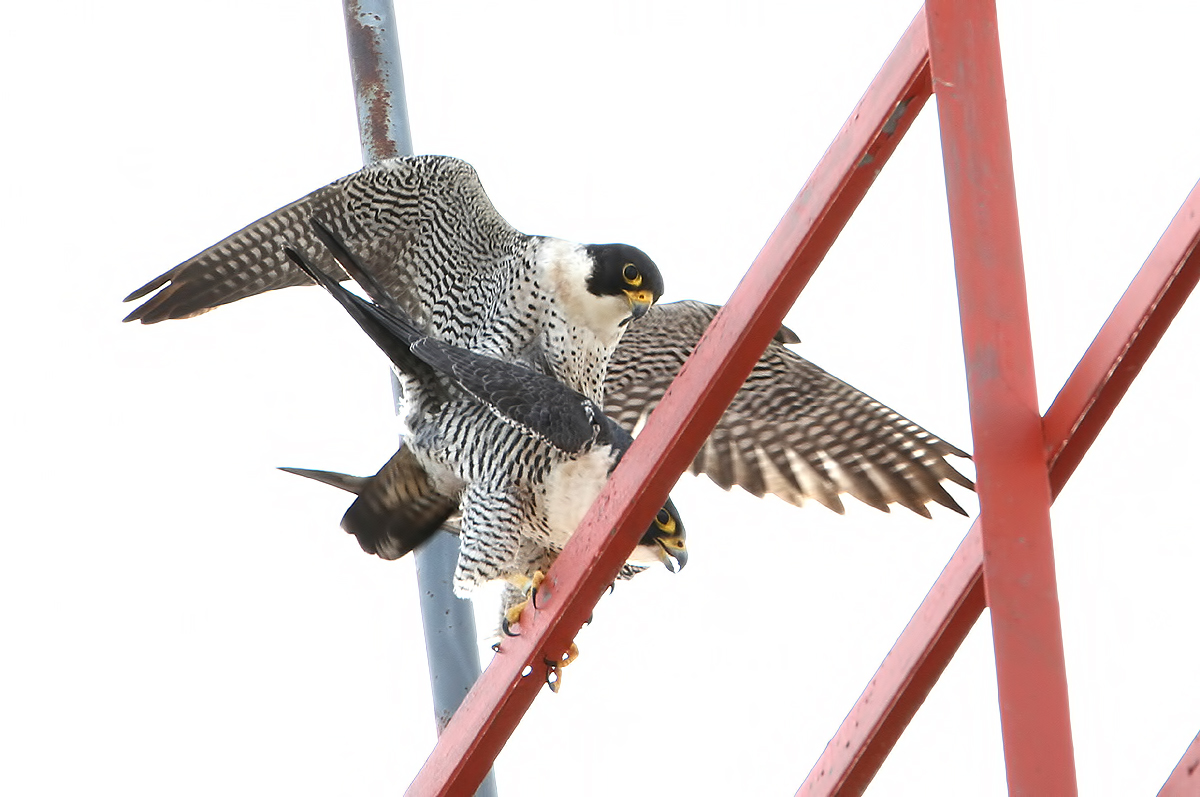
The next we learn of George is in 2010, when he appears at a nest site in downtown Winnipeg and to where he would return each year until 2015. He successfully raised offspring, migrated north and south and contributed to the wild breeding population of Peregrines in southern Manitoba.
However, in the spring of 2015 his very survival comes under serious threat. He is attacked by a competing male for his nest site in a territorial dispute. When he was found suffering from deep chest lacerations, a broken wing and surprisingly, 2 pellets in his chest from where he had been shot sometime in his life, his future seemed uncertain.
Fortunately, George was a survivor and after treatment at the Wildlife Haven, a local wildlife rehab organization, he was returned to Parkland Mews to recuperate. As a non-releasable bird, not being able to fly, or capture his own food due to his wing injury he was provided with scaffolding that allowed him to get close to the top perches in his breeding enclosure. Once again he was reunited with a nest barrel which he closely inspected, along with surroundings that would have been familiar to him from his formative days and weeks. Psychologically it appeared that he was expressing philopatric behaviour, that genetic ability that leads animals back to their natal grounds.
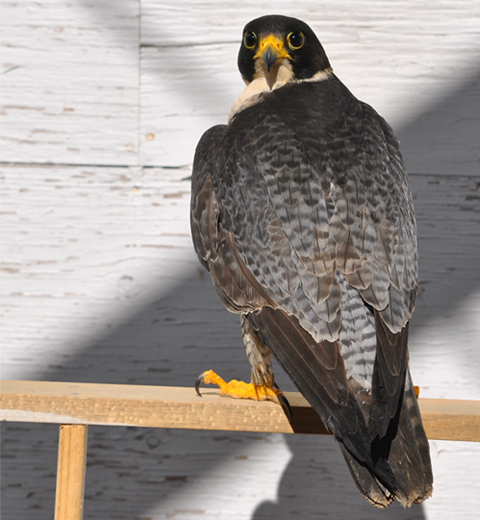
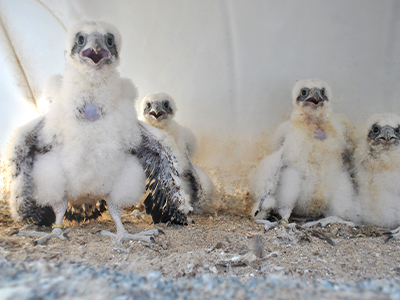
During the winter of 2015/2016 he was housed in a heated barn and paired with a female ‘Willow’. In the spring of 2016 he successfully mated with Willow and they raised three offspring. Since then they have raised four offspring every year. It appears that he still has much to offer and that the adjustment from successful wild producer to captive producer was aided by being returned to his natal enclosure where imprinting behaviour, memory and features familiar once again have created ongoing chapters in the life story of this incredible falcon, George.
George passed away August 18, 2023 at 16 years of age. He was a remarkable bird in so many ways. First of all, he belonged to that elite class of falcons where he not only overcame the 75% mortality suffered by many first year falcons, but also went on to produce offspring on a high rise in Winnipeg contributing to the wild population. This outstanding falcon went on to produce another 16 offspring during the remainder of his time at Parkland Mews. Fortunately, some of his genes still remain in some of the Peregrines now residing at our Manitoba location.
